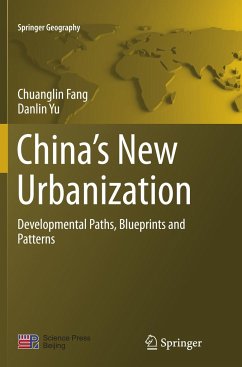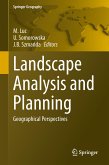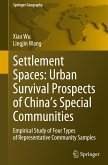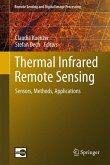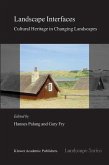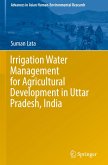This book answers the call for NewUrbanization, and proposesa "5+9+6" nationalspatial layout plan for the urbanizationof the 770 major cities in China. This macro pattern is based on a fewmajor metropolises at the center, and other cities supporting and benefitting from thesemetropolises to form a pyramid-like urban hierarchical system. The book also presents a comprehensiveregionalization plan for China's New Urbanization and strategic approaches to improving the quality of thisNew Urbanization.
Currently, China is aggressively promoting a so-called New Urbanization, which has been regarded as one of the primaryways to build a moderately prosperous society, to address critical issuesrelated to agriculture,rural regions and farmers, to expand domestic demand and promote industrial innovation, and to realize the China Dream.From a systematic perspective and using recently released urban data, theauthors analyze the current status of New Urbanization in China and also investigatethe various potential problems and obstacles to its concrete implementation. Based on the analysesand investigations, the authors propose strategic directions, paths and basicprinciples for China's New Urbanization. In addition, they clearly identify the three differentmodes of New Urbanization, namely, the general mode, differentiated mode, and gradual mode.
Today, many scholars argue that China's urban regions areexperiencing a highly unsustainable mode of development. Chinese cities areheavily burdened by theso-called "urban diseases,"which are characterized e.g.by congested traffic, polluted water and air, and a lack of open and green spaces. Traditionalurbanization, which primarily focuseson economic development, mustbe fundamentally reformed. New Urbanization, which focuses on integrated economic development,social integration and space/environmental sustainability, or simply put, on the quality ofurbanization, has been called for to provide a potential "cure" for these urban diseases. Due to the vastness of China'spopulation and its rapidly growing economic, political and cultural relationshipswith the rest of the world,the book demonstrates thatthe success of this New Urbanization is critical not only to the future of urban China,but also the future of urbanization worldwide.
Thebook offers a valuable referencework for all researchers, graduate student and policy makers interestedin China's urban development.
Currently, China is aggressively promoting a so-called New Urbanization, which has been regarded as one of the primaryways to build a moderately prosperous society, to address critical issuesrelated to agriculture,rural regions and farmers, to expand domestic demand and promote industrial innovation, and to realize the China Dream.From a systematic perspective and using recently released urban data, theauthors analyze the current status of New Urbanization in China and also investigatethe various potential problems and obstacles to its concrete implementation. Based on the analysesand investigations, the authors propose strategic directions, paths and basicprinciples for China's New Urbanization. In addition, they clearly identify the three differentmodes of New Urbanization, namely, the general mode, differentiated mode, and gradual mode.
Today, many scholars argue that China's urban regions areexperiencing a highly unsustainable mode of development. Chinese cities areheavily burdened by theso-called "urban diseases,"which are characterized e.g.by congested traffic, polluted water and air, and a lack of open and green spaces. Traditionalurbanization, which primarily focuseson economic development, mustbe fundamentally reformed. New Urbanization, which focuses on integrated economic development,social integration and space/environmental sustainability, or simply put, on the quality ofurbanization, has been called for to provide a potential "cure" for these urban diseases. Due to the vastness of China'spopulation and its rapidly growing economic, political and cultural relationshipswith the rest of the world,the book demonstrates thatthe success of this New Urbanization is critical not only to the future of urban China,but also the future of urbanization worldwide.
Thebook offers a valuable referencework for all researchers, graduate student and policy makers interestedin China's urban development.

